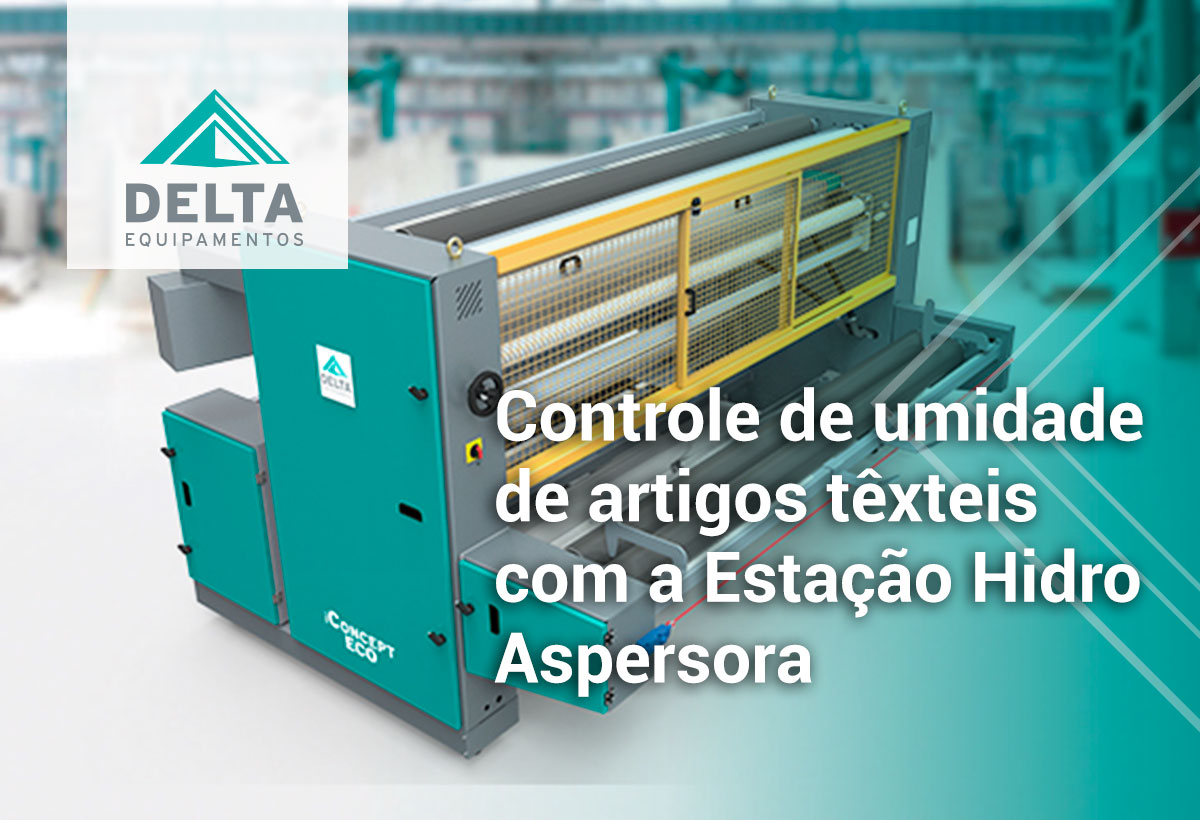The technology assists in various processes in the textile industry, including controlling the humidity of textile articles. The equipment developed can be great allies in quality control, also helping with productivity, improving the quality of articles and reducing failures.
An example is the humidity control of textile articles, which previously caused several problems for industries. With the arrival of the Hydro Sprinkler Station, the process is automated, generating a series of benefits for the company. Continue reading and check it out!
Optimization of finishing quality to avoid moisture in textile articles
Moisture control of textile articles is an important step that must be carried out before selling the roll because, when it is stored for a long time without packaging, it tends to change the humidity percentages and can absorb or lose moisture to the environment.
This change affects the quality of the roll, since the percentage of moisture in the internal part of the roll is different from the percentage of moisture in the external part of the roll (exposed to the weather). Therefore, the equipment is responsible and ensures that the entire roll has adequate humidity, according to the natural percentage of each article, impacting the feel and fit of the mesh.
Have you read these?
- What is the relationship between productivity and advancement in the textile sector?
- How to improve the productivity of a clothing factory?
- The importance of quality control in processing
Process automation and scale gain
Process automation is increasingly common in the textile industry and the future promises innovations that will increasingly facilitate increased productivity, reduced human error and the possibility of producing more and more in less time.
The gain of scale can provide a very large difference. In the case of the Hydro Sprinkler Station, it balances the humidity of each fabric with precision. For example: if the cotton material, which should have between 7% and 8% moisture, is at 4%, the machine applies the remaining 3%. If it is at 5%, it only applies another 2% and so on.
It may also contain a residual sensor that analyzes the moisture content of the fabric and automatically performs the correction, just inform which fabric will be analyzed. As a result, the textile material will have a uniform humidity percentage (beginning, middle and end of the roll) and ideal according to its particularities (regain).
Gain of scale and increase in production capacity
Although it is possible to enter the weight and composition of the article manually for more personalized choices, one of the options present in the Hydro Sprinkler Station is the creation of “recipes”, which are options that you save and use as needed. With this, you can carry out services much more quickly, gaining scale and increasing your production capacity.
Furthermore, the mesh is sold in kilos, which means that the natural moisture of the articles that would generate the weight is lost (breaks), causing losses. With the equipment, moisture is recovered and there are no unnecessary losses.
Gain in competitiveness
In the past, Industry 4.0 was talked about as a possible future, but now it is already a reality. Proof of this is that the modernization of quality control can even enable integration with other devices, such as ERP to save, print, add a barcode reader and much more.
Large companies are already adapting and now this is also possible for medium-sized companies, making the market even more competitive. Those that leave it until the last minute run the risk of losing space in the market.
Want to understand more about Industry 4.0? Check out our article “The future of the Textile Industry in Era 4.0: with Robson Wanka”!



